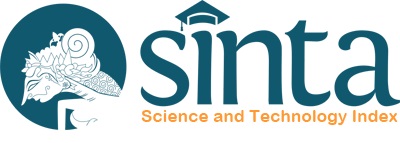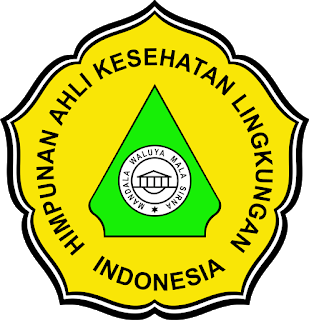Analysis of Polyethylene Terephthalate Polymer Microplastic Exposure Using the Environmental Health Risk Assessment Method
DOI:
https://doi.org/10.32382/sulo.v25i2.1779Keywords:
Microplastics; polyethylene terephthalate (PET); refillable drinking water; environmental health risk assessment; risk quotientAbstract
Microplastic contamination in drinking water has emerged as a global public health concern. This study aimed to analyze the exposure of microplastics, particularly polyethylene terephthalate (PET), in refillable drinking water using the Environmental Health Risk Assessment (EHRA) method. A total of 20 water samples were collected from refill stations in Tamangapa Village, Makassar City. Microscopic analysis identified 104 microplastic particles, predominantly in the form of fibers (line shape) with dominant colors of blue (39 items) and transparent (27 items). Fourier Transform Infrared (FTIR) spectroscopy confirmed the presence of PET as the major polymer, along with smaller amounts of polyethylene, polypropylene, and ethylene vinyl acetate. The concentration of microplastics varied between 0.001 mg/kg and 0.030 mg/kg. Exposure assessment involving 100 respondents revealed that average water intake was 210 mg/kg/day, with an exposure frequency of 350 days/year. Non-carcinogenic intake projections over 5–30 years indicated increasing exposure levels, with mean values ranging from 0.0040 to 0.0242 mg/kg/day, surpassing the reference dose (RfD = 0.0004 mg/kg/day). Risk characterization showed that the Risk Quotient (RQ) values consistently exceeded 1, ranging from 10.07 to 60.47, indicating an unacceptable health risk. Lower body weight was associated with higher susceptibility to microplastic toxicity. These findings highlight that long-term consumption of refillable drinking water contaminated with PET microplastics poses significant non-carcinogenic health risks to the local population. Strengthening monitoring systems, improving water treatment processes, and formulating targeted public health policies are urgently required to mitigate microplastic exposure.
Keywords : Microplastics; polyethylene terephthalate (PET); refillable drinking water; environmental health risk assessment; risk quotient
References
Faujiah, I. N., & Wahyuni, I. R. (2022). Kelimpahan dan karakteristik mikroplastik pada air minum serta potensi dampaknya terhadap kesehatan manusia. In Gunung Djati Conference Series (Vol. 7, pp. 89-95). http://conferences.uinsgd.ac.id/index.php/gdcs/article/view/609
Supriyo, E., & Noviana, S. N. (2023). Kandungan Mikroplastik Pada Air Minum Dalam Kemasan (AMDK) yang Beredar di Semarang, Jawa Tengah. METANA, 19(2), 69-78. https://doi.org/10.14710/metana.v19i2.58548
Brancaleone, E., Mattei, D., Fuscoletti, V., Lucentini, L., Favero, G., Cecchini, G., ... & Lazzazzara, M. (2024). Microplastic in drinking water: a pilot study. Microplastics, 3(1), 31-45. https://doi.org/10.3390/microplastics3010003
Sari, G. L., Utami, M. R., Kasasiah, A., Rohmana, A. S., Amethysia, N. R., Cahyaningrum, P., ... & Kurniawan, S. B. (2021). Investigation of Microplastics in Raw and Processed Water for Unbranded Refilled Drinking Water in Karawang, Indonesia. https://papers.ssrn.com/sol3/papers.cfm?abstract_id=5071763
Supit, A., Tompodung, L., & Kumaat, S. (2022). Mikroplastik sebagai Kontaminan Anyar dan Efek Toksiknya terhadap Kesehatan Microplastic as an Emerging Contaminant and its Toxic Effects on Health. Jurnal Kesehatan, 13(1), 199-208. https://ejurnal.poltekkes-tjk.ac.id/index.php/JK
VENECIA, J. A. (2023). Deteksi mikroplastik pada air minum dalam kemasan dari depot isi ulang di Kecamatan Pedurungan Semarang. https://repository.unika.ac.id/31318/
Wiguna, M. B. A. (2023). Analisis Kontaminasi Mikroplastik Pada Air Minum Dalam Kemasan Dengan Polimer Pet (Doctoral dissertation, Universitas BATANGHARI Jambi). https://repository.unbari.ac.id/id/eprint/2734
Apriliani, S. D., Sari, G. L., & Amanah, N. (2025). Studi Literatur: Efektivitas Penyisihan Kelimpahan Mikroplastik Menggunakan Teknologi Filter Pasir dan Membran Reverse Osmosis pada Pengolahan Air Minum. Jurnal Teknologi Lingkungan Lahan Basah, 13(2), 119-125. https://doi.org/10.26418/jtllb.v13i2.94199
Shruti, V. C., Kutralam-Muniasamy, G., Pérez-Guevara, F., Roy, P. D., & Elizalde-Martínez, I. (2022). Free, but not microplastic-free, drinking water from outdoor refill kiosks: A challenge and a wake-up call for urban management. Environmental Pollution, 309, 119800. https://doi.org/10.1016/j.envpol.2022.119800
Pérez-Guevara, F., Roy, P. D., Elizalde-Martínez, I., Kutralam-Muniasamy, G., & Shruti, V. C. (2022). Human exposure to microplastics from urban decentralized pay-to-fetch drinking-water refill kiosks. Science of The Total Environment, 848, 157722. https://doi.org/10.1016/j.scitotenv.2022.157722
Hadeed, M. D. M., & Al-Ahmady, K. K. (2022). The effect of different storage conditions for refilled plastic drink bottles on the concentration of microplastic release in water. J. Res. Appl. Sci. Biotechnol, 1, 71-77. https://doi.org/10.55544/jrasb.1.4.9
Acarer, S. (2023). Abundance and characteristics of microplastics in drinking water treatment plants, distribution systems, water from refill kiosks, tap waters and bottled waters. Science of the Total Environment, 884, 163866. https://doi.org/10.1016/j.scitotenv.2023.163866
Kasim, S., Daud, A., Birawida, A. B., Mallongi, A., Arundhana, A. I., Rasul, A., & Hatta, M. (2023). Analysis of environmental health risks from exposure to polyethylene terephthalate microplastics in refilled drinking. Global Journal of Environmental Science and Management, 9, 301-318. DOI:10.22034/GJESM.2023.09.SI.17
Sakinah, F., Indrasari, W., & Umiatin, U. (2022). Pengukuran Kualitas Air Tercemar Limbah Mikroplastik Berdasarkan Parameter Fisika. In Prosiding Seminar Nasional Fisika (E-Journal) (Vol. 10). https://doi.org/10.21009/03.SNF2022.01.FA.12
Mustikasari, D. A. (2021). Perlindungan Hukum Bagi Konsumen Produk Air Minum Dalam Kemasan Dari Kandungan Mikroplastik. Universitas Muhammadiyah Jember, 31-1. https://repository.unmuhjember.ac.id/11875/2/b.%20Abstrak.pdf
Siregar, T. A. P., & Santi, D. N. (2025). Analisis kualitas fisik dan keberadaan mikroplastik pada air minum isi ulang di Kecamatan Medan Selayang tahun 2023. TROPHICO: Tropical Public Health J., 5(1), 1-10. https://doi.org/10.32734/trophico.v5i1.16036
Christanto, M. A. (2023). Deteksi Mikroplastik pada Air Minum Dari Depot Isi Ulang di Kecamatan Semarang Tengah (Doctoral dissertation, Universitas Katholik Soegijapranata Semarang). https://repository.unika.ac.id/31332/?__cf_chl_rt_tk=0QTkqxDI8Sp0bvBsdcVK2dNsREa.O1Xh2oT7JvvNdy0-1758525484-1.0.1.1-Uw6I2qA_6RGiTs1CgDERfKCDSVUHglJy0z.bBqePVJ0
la Cecilia, D., Philipp, M., Kaegi, R., Schirmer, M., & Moeck, C. (2024). Microplastics attenuation from surface water to drinking water: impact of treatment and managed aquifer recharge–and identification uncertainties. Science of the Total Environment, 908, 168378. https://doi.org/10.1016/j.scitotenv.2023.168378
Yan, M., Yang, J., Sun, H., Liu, C., & Wang, L. (2022). Occurrence and distribution of microplastics in sediments of a man-made lake receiving reclaimed water. Science of the Total Environment, 813, 152430. https://doi.org/10.1016/j.scitotenv.2021.152430
New, W. X., Kristanti, R. A., Manik, H., Wijayanti, Y., & Adeyemi, D. A. (2023). Occurrence of microplastics in drinking water in South east Asia: a short review. Tropical Environment, Biology, and Technology, 1(1), 14-24. https://doi.org/10.53623/tebt.v1i1.221
Luqman, A., Nugrahapraja, H., Wahyuono, R. A., Islami, I., Haekal, M. H., Fardiansyah, Y., ... & Wibowo, A. T. (2021). Microplastic contamination in human stools, foods, and drinking water associated with the Indonesian coastal population. Environments, 8(12), 138. https://doi.org/10.3390/environments8120138
Giese, A., Kerpen, J., Weber, F., & Prediger, J. (2021). A preliminary study of microplastic abrasion from the screw cap system of reusable plastic bottles by Raman microspectroscopy. ACS ES&T Water, 1(6), 1363-1368.
Sun, X., Zhu, Y., An, L., Liu, Y., Zhuang, Y., Wang, Y., ... & Xu, Q. (2024). Microplastic transportation in a typical drinking water supply: from raw water to household water. Water, 16(11), 1567. https://doi.org/10.3390/w16111567
Agbasi, J. C., Egbueri, J. C., Pande, C. B., Khan, M. Y. A., Ighalo, J. O., Uwajingba, H. C., & Abba, S. I. (2025). Review of the potential effects and remediation strategies of microplastic pollutants in drinking water sources. Analytical Letters, 58(5), 799-839. https://doi.org/10.1080/00032719.2024.2343366
Álvarez-Fernández, C., Matikainen, E., McGuigan, K. G., Andrade, J. M., & Marugán, J. (2024). Evaluation of microplastics release from solar water disinfection poly (ethylene terephthalate) and polypropylene containers. Journal of Hazardous Materials, 465, 133179. https://doi.org/10.1016/j.jhazmat.2023.133179
Shruti, V. C., Muniasamy, G. K., Pérez-Guevara, F., Roy, P. D., & Elizalde-Martínez, I. (2024). Corrigendum:“Free, but not microplastic-free, drinking water from outdoor refill kiosks: A challenge and a wake-up call for urban management”[Environ. Pollut. 309 (2022) 119800]. Environmental Pollution, 359, 124699. https://doi.org/10.1016/j.envpol.2024.124699
Abdulmalik, A. & Mansurat, G. (2019). Presence and characterization of microplastics in drinking (tap/bottled) water and soft drinks [Master’s thesis]. University of North Dakota.
McCormick, A., Hoellein, T. J., Mason, S. A., Schluep, J. & Kelly, J. J. (2014). Microplastic is an abundant and distinct microbial habitat in an urban river. Environmental Science & Technology, 48(20), 11863–11871. https://doi.org/10.1021/es503610r
Amobonye, A., Bhagwat, P., Singh, S. & Pillai, S. (2021). Plastic biodegradation: Frontline microbes and their enzymes. Science of The Total Environment, 759, 143536. https://doi.org/10.1016/j.scitotenv.2
Amrutha, K. & Warrier, A. K. (2020). The first report on the source-to-sink characterization of microplastic pollution from a riverine environment in tropical India. Science of The Total Environment, 739, 140377. https://doi.org/10.1016/j.scitotenv.2020.140377
Ayuningtyas, W. C. (2019). Kelimpahan mikroplastik pada perairan di Banyu Urip, Gresik, Jawa Timur. Journal of Fish and Marine Research, 3(1), 41–45. https://doi.org/10.21776/ub.jfmr.2019.003.01.5
A’yun, N. Q. (2019). Analisis mikroplastik menggunakan FT-IR pada air, sedimen, dan ikan belanak (Mugil cephalus) di Sungai Bengawan Solo yang melintasi Kabupaten Gresik [Undergraduate thesis]. Universitas Islam Negeri Sunan Ampel Surabaya.
Campanale, C., Massarelli, C., Savino, I., Locaputo, V. & Uricchio, V. F. (2020). A detailed review study on potential effects of microplastics and additives of concern on human health. International Journal of Environmental Research and Public Health, 17(4), 1212. https://doi.org/10.3390/ijerph17041212
Chaudhari, S. & Samnani, P. (2022). Determination of microplastics in pond water. Materials Today: Proceedings, 77(3), 1000–1005. https://doi.org/10.1016/j.matpr.2022.10.141
Chen, G., Fu, Z., Yang, H. & Wang, J. (2020). An overview of analytical methods for detecting microplastics in the atmosphere. TrAC Trends in Analytical Chemistry, 130, 115981. https://doi.org/10.1016/j.trac.2020.115981
Schymanski, D., Goldbeck, C., Humpf, H. U. & Fürst, P. (2018). Analysis of microplastics in water by micro-Raman spectroscopy: Release of plastic particles from different packaging into mineral water. Water Research, 129, 154–162. https://doi.org/10.1016/j.watres.2017.11.011
Corami, F., Rosso, B., Bravo, B., Gambaro, A. & Barbante, C. (2020). Development and optimization of different extraction techniques for the analysis of microplastics in estuarine and coastal sediments. Analytical and Bioanalytical Chemistry, 412, 3665–3675. https://doi.org/10.1007/s00216-020-02669-0
Crawford, C. B. & Quinn, B. (2017). Microplastic pollutants. In Microplastic Pollutants (pp. 1–17). Elsevier. https://doi.org/10.1016/B978-0-12-809406-8.00001-9
Efome, J. E., Rana, D., Matsuura, T. & Lan, C. Q. (2018). Experimental determination of the effectiveness of electrospun nanofiber membranes for microplastic removal from drinking water. Environmental Science: Water Research & Technology, 4(12), 2070–2079. https://doi.org/10.1039/C8EW00623J
Ekanayake, D. I., Pathiratne, A. & Vithanage, M. (2020). A study of microplastics in municipal solid waste in Sri Lanka. Environmental Nanotechnology, Monitoring & Management, 14, 100356. https://doi.org/10.1016/j.enmm.2020.100356
Eslami, A., Mortazavi, S. M., Zare, F. & Salavati, H. (2021). A review on microplastics: Properties, detection, and applications. Environmental Nanotechnology, Monitoring & Management, 16, 100547. https://doi.org/10.1016/j.enmm.2021.100547
European Chemicals Agency. (2019). Annex XV Restriction Report: Proposal for a restriction. Available at: https://echa.europa.eu/documents/10162/3e7f0e95-189d-72b7-79ed-f347d4bcaec1
Fackelmann, G. & Sommer, S. (2019). Microplastics and the gut microbiome: How chronically exposed species may suffer from gut dysbiosis. Marine Pollution Bulletin, 143, 193–203. https://doi.org/10.1016/j.marpolbul.2019.04.030
GESAMP. (2015). Sources, fate and effects of microplastics in the marine environment: A global assessment. GESAMP Reports and Studies No. 90. Available at: http://www.gesamp.org/publications/microplastics-in-the-marine-environment
Guo, X. & Wang, J. (2019). The chemical behaviors of microplastics in marine environment: A review. Marine Pollution Bulletin, 142, 1–14. https://doi.org/10.1016/j.marpolbul.2019.03.019
Hanif, R. (2019). Mikroplastik sebagai emerging pollutant dalam sistem akuifer dan implikasinya terhadap kualitas air tanah. Jurnal Geologi Lingkungan, 20(2), 123–134. https://doi.org/10.5614/j.geologi.lingkungan.2019.20.2.2
Hartmann, N. B., Hüffer, T., Thompson, R. C., Hassellöv, M., Verschoor, A., Daugaard, A. E. et al. (2019). Are we speaking the same language? Recommendations for a definition and categorization framework for plastic debris. Environmental Science & Technology, 53(3), 1039–1047. https://doi.org/10.1021/acs.est.8b05297
Hidayaturrahman, H. & Lee, T. H. (2019). A study on characteristics of microplastic in wastewater of South Korea: Identification, quantification, and fate of microplastics during treatment process. Marine Pollution Bulletin, 146, 696–702. https://doi.org/10.1016/j.marpolbul.2019.06.071
Horton, A. A., Walton, A., Spurgeon, D. J., Lahive, E. & Svendsen, C. (2017). Microplastics in freshwater and terrestrial environments: Evaluating the current understanding to identify the knowledge gaps and future research priorities. Science of The Total Environment, 586, 127–141. https://doi.org/10.1016/j.scitotenv.2017.01.190
Ivanova, V., Stojanovic, D., Arsic, M., Pavlovic, S., Rajilic-Stojanovic, M., Radulovic, M. et al. (2021). Microplastic and nanoplastic pollution: The environmental and health hazard. Archives of Industrial Hygiene and Toxicology, 72(3), 190–199. https://doi.org/10.2478/aiht-2021-72-3532
Jahan, S. & Strezov, V. (2018). An assessment of advances in analytical tools for determining microplastics in the environment. TrAC Trends in Analytical Chemistry, 109, 173–179. https://doi.org/10.1016/j.trac.2018.10.010
Jambeck, J. R., Geyer, R., Wilcox, C., Siegler, T. R., Perryman, M., Andrady, A. et al. (2015). Plastic waste inputs from land into the ocean. Science, 347(6223), 768–771. https://doi.org/10.1126/science.1260352
Kurniawan, S. B., Lo, W., Tran, N. H., Othman, M. H. D. & Sher, F. (2022). Removal of microplastics from water and wastewater by membrane technology: A review. Journal of Hazardous Materials, 429, 128291. https://doi.org/10.1016/j.jhazmat.2022.128291
Downloads
Published
How to Cite
Issue
Section
PDF (Bahasa Indonesia) downloaded: 0


















